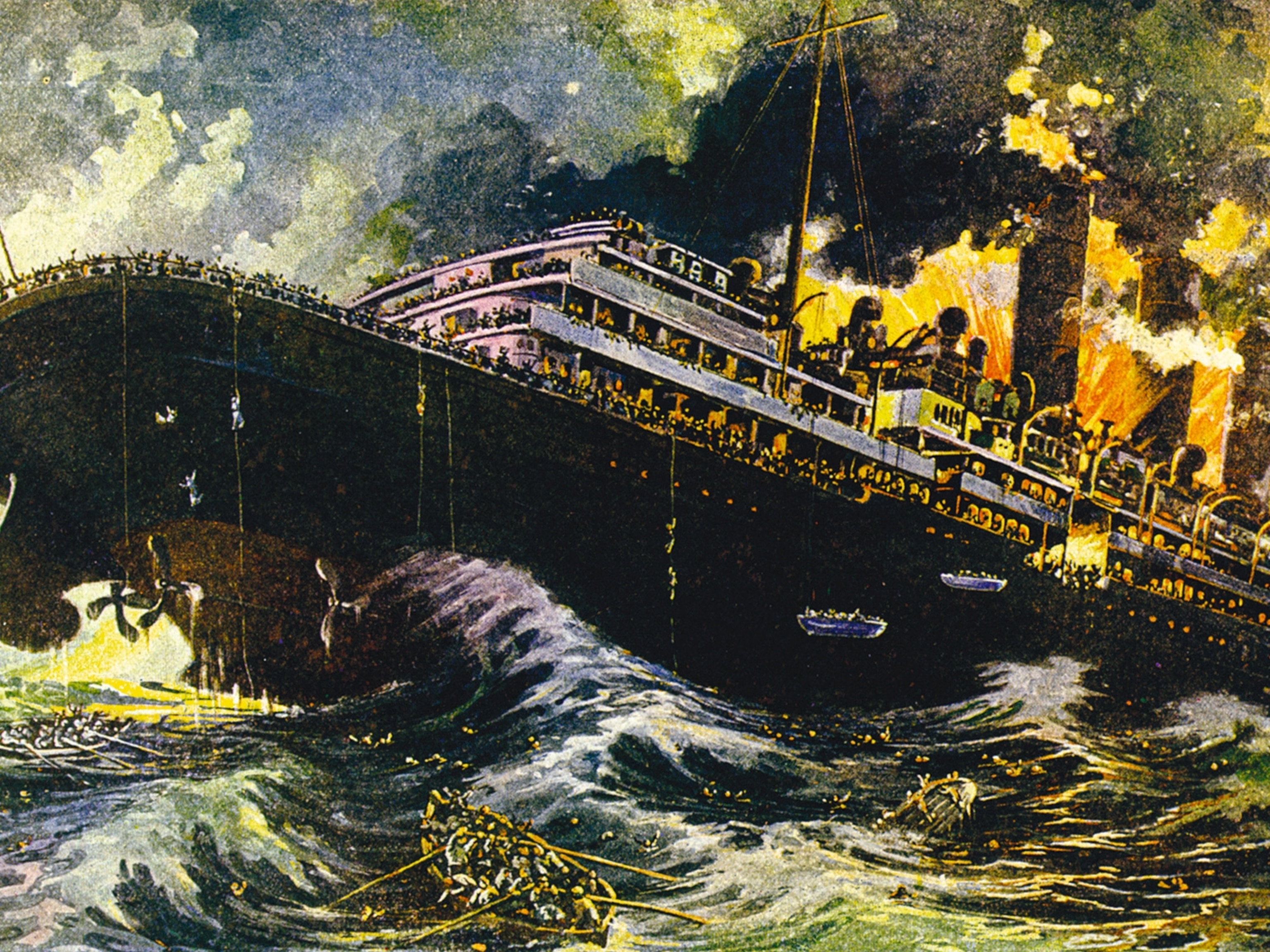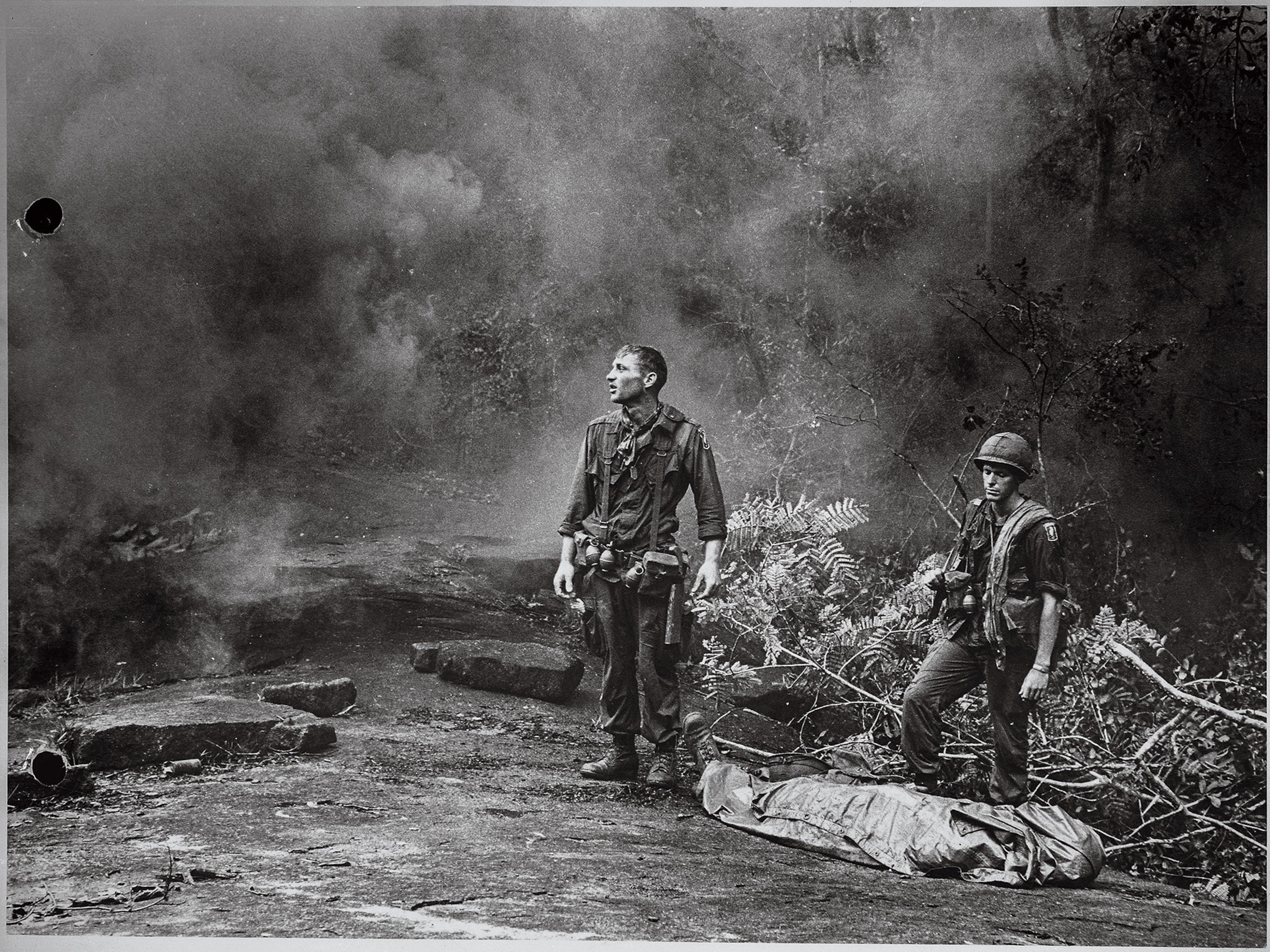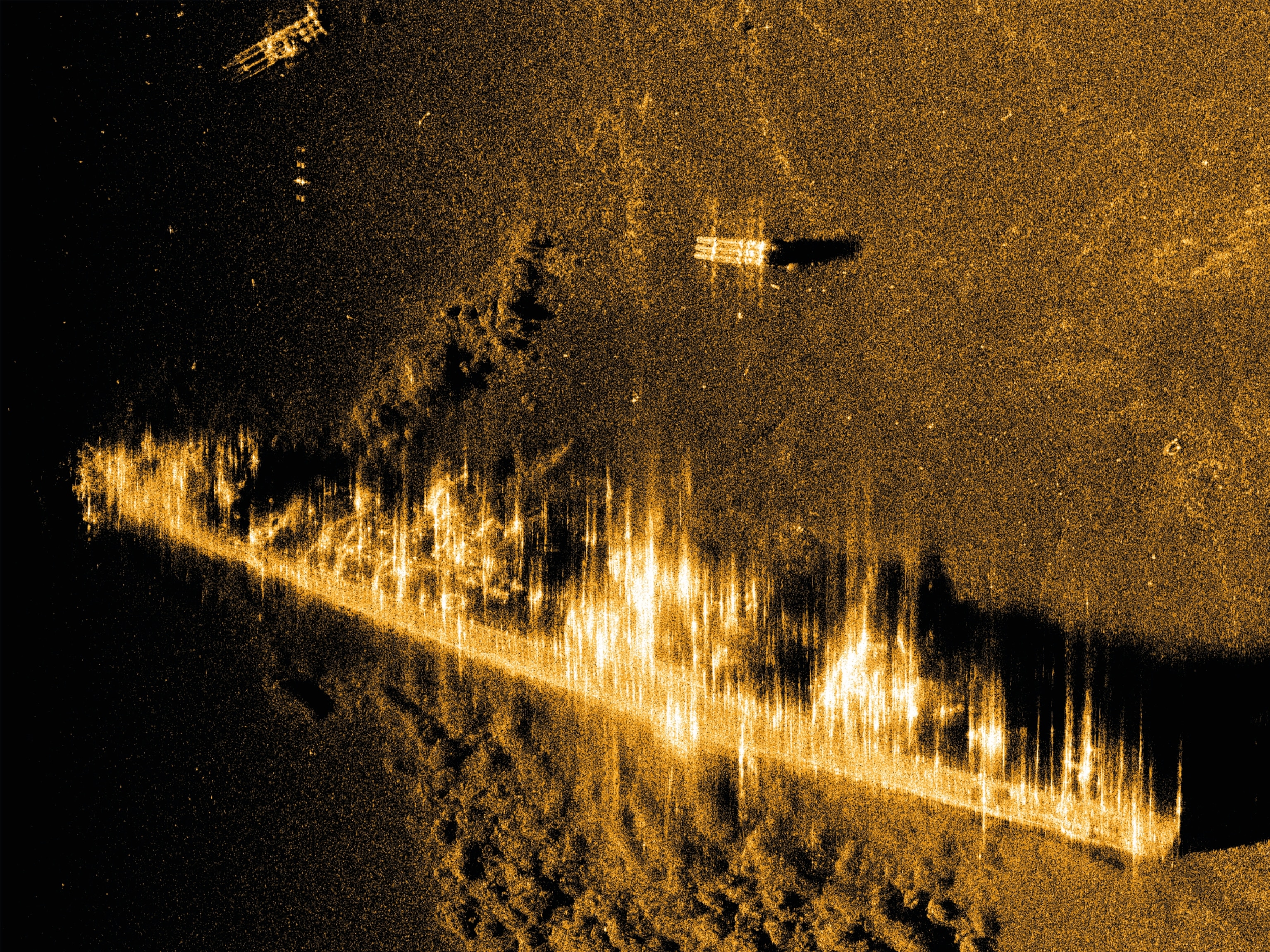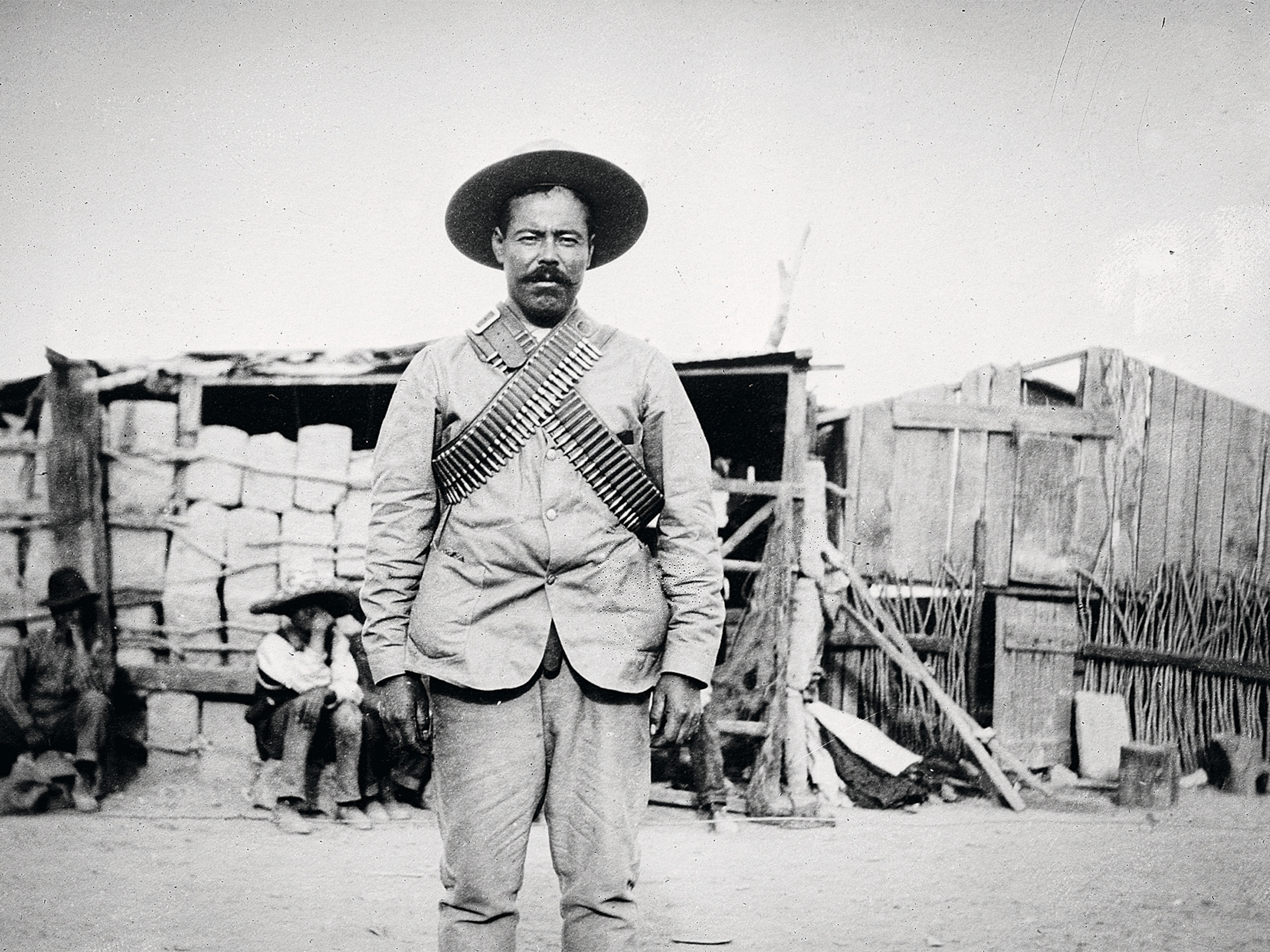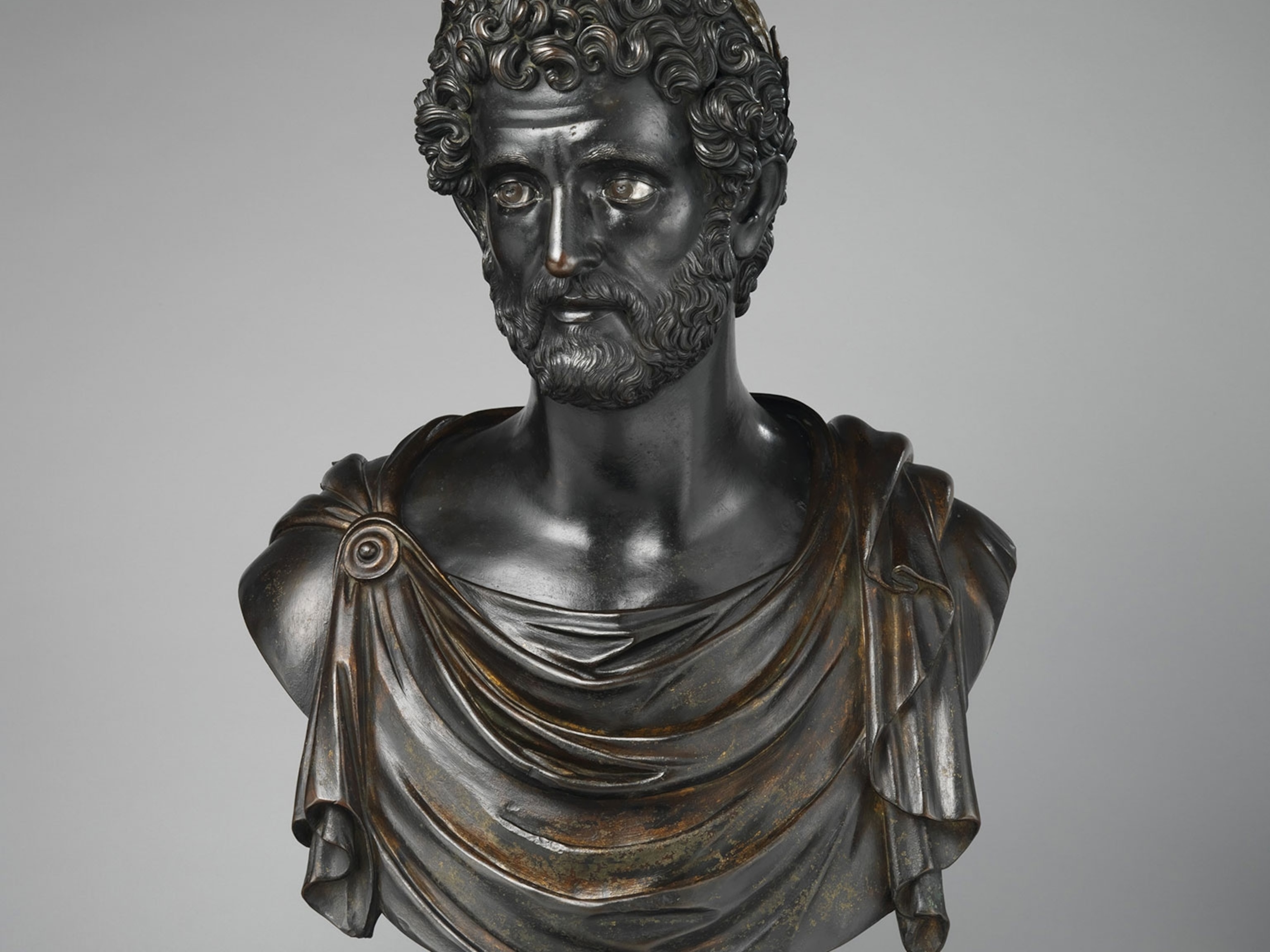From Tsar to U.S.S.R.: Russia's Chaotic Year of Revolution
In January 1917, Tsar Nicholas II ruled Russia while Bolshevik Vladmir Lenin lived in exile. By October, revolution had reversed their roles, leaving the former tsar a prisoner and Lenin holding all the power.
Its events paved the way for the Soviet Union. It dominated the politics of the 20th century, and it has left an indelible mark on the contemporary world. But when Russia’s year of revolution began in the bitterly cold February of 1917, many revolutionaries did not, at first, pay much attention.
The first sign that something big was happening was on International Women’s Day—February 23, 1917, in the old Russian calendar. Crowds of female factory workers gathered in the center of Petrograd, the Russian capital (formerly known as St. Petersburg). Even as disaffected and hungry workers, male and female, joined in the protests, some revolutionaries remained skeptical. Aleksandr Shlyapnikov was a leading figure of the Bolshevik movement, whose leader, Vladimir Ilich Lenin, had been living outside Russia for long periods of time since 1900. Shlyapnikov observed on February 25: “Give the workers a pound of bread and the movement will peter out.”
Hunger, War, Rage
Despite initial doubts that the growing February protests would amount to much, many observers at the time—including Lenin’s Bolsheviks, Russian liberals, and foreign diplomats—were nevertheless certain that a revolution was only a matter of time.
The roots of Russia’s turmoil ran deep. During a devastating famine in the early 1890s, the inability of the government to provide sufficient relief had fanned revolutionary fervor in the country. In the cities, the appalling exploitation and squalor suffered by the workers triggered waves of protests and strikes.
The pressures of industrialization were worsened by the actions of Tsar Nicholas II. Reigning from 1894, Nicholas had inherited Russia’s colossal empire and the autocratic ideas of his family, the Romanov dynasty. In 1905 the tsar’s popularity was ebbing due to continuing domestic problems as well as an unpopular war with Japan. During a peaceful demonstration in St. Petersburg in January 1905, protesters were fired on and killed, an event that triggered months of protests.
Nicholas II: The Last of Russia's Tsars
Tsar Nicholas II Romanov—born Nikolay Aleksandrovich in 1868—had grown up in the shadow of his father, the bearded, burly Alexander III. His son worshipped his father, even though Alexander openly regarded Nicholas as a weakling and nicknamed him “girlie.”
When Nicholas became tsar in 1894, he understood little of modern Russia, whose ever more educated, urban, and restless society was on a collision course with his autocratic instincts. Russia’s 1904-05 war with Japan ended in humiliation and revolution in the streets of St. Petersburg. The cocktail of war and revolt would prove his undoing a decade later, even though Russia entered World War I in 1914 on a surge of patriotism. His decision to take supreme command of the armed forces—and the influence of the sinister monk Rasputin over his wife—lost Nicholas crucial support. Not even his abdication in March 1917 would save him from the Bolsheviks. The Romanov family was held in a house in Yekaterinburg until July 1918, when Nicholas, his wife, and their five children were murdered in the cellar.
The revolt continued throughout the year. In the fall of 1905 Tsar Nicholas finally compromised. He issued the October Manifesto, which laid the groundwork for the protection of civil rights, the creation of a constitution, and the establishment of a parliament called the Duma. These concessions appeased enough of the revolutionaries for Nicholas to stay in power.
Many others viewed the October Manifesto as too little, too late. Inspired by the writings of Karl Marx (1818-1883), who foresaw a revolt in which laborers would become the ruling class, revolutionary figures, such as Lenin, continued to agitate against the tsar.
Just under a decade later, unresolved social and economic tensions were magnified by Russia’s entry into World War I in 1914. Located near the front line with Germany, Petrograd (the former St. Petersburg) swarmed with soldiers and hungry workers, who toiled in the shadow of the city’s lavish palaces. Exhausted by the war and food shortages, by early 1917 Petrograd was a powder keg of despair and anger with those in power.
What happened next was not just a revolution, but multiple revolutions; a rejection not just of the state, but of all figures of authority: judges, policemen, government officials, army and navy officers, priests, teachers, employers, landowners, village elders, and patriarchally minded fathers and husbands.
The February Revolution
Contrary to Shlyapnikov’s prediction that the protests would peter out, the unrest snowballed in the last days of February. Red flags and banners began to appear, calling for the downfall of the monarchy.
Despite the turmoil, the authorities could have contained the situation if they had avoided open conflict with the crowds. But the forces of the tsar opened fire, killing protesters. The demonstrations began to turn into a full-scale revolution as angry protesters broke into the barracks of the city’s Pavlovsky Regiment. Rather than attack them, the soldiers joined the protesters, some even firing on their own officers.
The authorities were, by now, almost deprived of military power in the capital. The expansion of the revolt led some to assume that events were being orchestrated by socialist parties. In fact, they were driven by many individuals: soldiers, workers, and students, people whose names never made it into the history books.
On February 27 a crowd came to the Tauride Palace—the seat of the Duma—looking for leaders. A workers’ council, known as a soviet, was elected. The majority of the leaders of the Petrograd Soviet had no intention of taking power. Instead, they wanted the Duma leaders to form a government in line with the doctrine laid down by Karl Marx: That in a country such as Russia, the first step toward a socialist order would be taken by bourgeois democrats. On March 1, a provisional government was formed. The soviet pledged to support it as long as it adhered to a comprehensive list of democratic principles.
Nothing less than Tsar Nicholas’s abdication, meanwhile, could save the war campaign against Germany—all his senior generals told him so. The Duma also called on him to stand down. On March 2, 1917, Nicholas II gave up the throne. The end of the monarchy was marked by scenes of rejoicing throughout the Russian Empire. Symbols of monarchical power—emblems, coats of arms, double-headed eagles, and tsarist statues—were destroyed.
The Freest Country
Although the Provisional Government saw itself as an interim body to guide the country through the war and the ongoing political upheaval, it nevertheless enacted significant reforms. Led by Prime Minister Prince Georgy Lvov, a liberal reformer, and Minister of Justice Aleksandr Kerensky—the lone socialist and only government figure who was also a member of the soviet—it swept away the old laws of the tsarist regime against freedoms of speech and assembly. Russia was transformed into what Lenin called the “freest country in the world.”
From exile in Switzerland, the Bolshevik leader followed the rapid course of events in Petrograd with frustration. He finally returned to Russia on a sealed train provided by the Germans, who were hoping that his opposition to the war would undermine the Russian war effort. On April 3 Lenin arrived at Petrograd’s Finland Station with a 10-point program—his April Theses (later published in Pravda, the Bolshevik newspaper)—for a second revolution based on “power to the soviets.”
Return to Russia
As Lenin observed World War I from exile, the Germans observed the deteriorating domestic situation of its enemy Russia. They proposed to allow Lenin to return to Russia in late March 1917 in the hopes that his presence would lead to more chaos and further weaken the country. Fellow Russian exiles viewed Lenin as a traitor for making a deal with Russia’s enemy, but Lenin, his wife, and a group of fellow émigrés made the voyage anyway. They boarded a “sealed train” that would travel through Switzerland to Sweden. On arrival at Petrograd’s Finland Station on April 3, Lenin undermined the Provisional Government by declaring, “All power to the soviets.” Germany’s gamble that Lenin would increase destabilization in Russia paid off. Later, British prime minister Winston Churchill assessed the move: “They turned upon Russia the most grisly of weapons. They transported Lenin in a sealed truck like a plague bacillus.
Lenin’s writings ran counter to Marxist theory because they rejected the need for the first phase—the “bourgeois-democratic” revolution. Even so, Lenin managed to win the Bolshevik Party around to his theses. Mass enrollments of workers and soldiers drawn to his charisma aided his cause. These new members knew little about Marxist theory and valued his efficiency: Why wait to reach socialism in two stages when they could get there in one?
Discontent continued to spread throughout Russia from the cities to the countryside. Workers’ expectations soared: Strikers called for an eight-hour day and workers’ control of the factories. As part of the wider crisis in authority, the Petrograd Soviet had limited control over revolts in the provinces and agrarian communities. Local towns and regions behaved as if they were independent of the nation. As in 1905, the village commune was the organizing kernel of the revolution in the countryside, as land and livestock were seized. Soldiers had their own committees, which supervised relations with the officers. Some soldiers refused to fight for more than eight hours a day, claiming the same rights as the workers.
Marx and Lenin
Karl Marx died in 1883 when Lenin was 12 years old. Defined in works such as The Communist Manifesto and Das Kapital, Marx’s brand of socialism, known as communism, had become favored by European left-wing revolutionary thinkers. It was defined by “historical materialism,” an idea that argued that society and its political structures are shaped by the economic reality of the time. Analyzing the economic—and therefore, social—evolution of humanity, Marx considered that he could scientifically predict the later stages of capitalism. First, a revolution would be led by the bourgeoisie. Then, a revolution led by the workers would establish a dictatorship that would eventually lead to communism and freedom for all. Even though Lenin would become an ardent follower of Marxist doctrine, he would be an impatient one. Marx’s prophecy contemplated the eventual downfall of ripe, capitalist societies—not budding, semifeudal ones like Russia in the early 20th century. In 1917 Lenin quickly realized that the revolution could not wait to pass through the bourgeois stage envisaged by Marx. Lenin directed his efforts into seizing power and establishing a dictatorship of the workers. Marx’s last stage—freedom for all—never materialized.
The Road to Civil War
For the leaders of the Provisional Government, the preservation of the Russian state depended on the success of the military. Defeat by Germany could mean a return to the old order and restoration of the Romanov dynasty. Under pressure from the Allies, Russia launched a new offensive in mid-June 1917. For two days the Russians advanced, but on the third, they were pushed back by a German counteroffensive.
Alarmed by the German advance, the Provisional Government mobilized the First Machine-Gun Regiment, which comprised most of the pro-Bolshevik soldiers in the Petrograd Garrison. Accusing the government of using the German offensive as an excuse to disperse Bolshevik elements, the regiment resolved to overthrow the government if it continued with its “counterrevolutionary” order.
Despite the regiment’s stand, the Bolshevik leaders were more cautious. On July 4, throngs of soldiers, workers, and sailors from the Kronstadt naval base marched through the city in armed ranks. They massed in front of Bolshevik headquarters looking for instructions—but at this crucial moment, Lenin lost his nerve. He gave no call for an uprising. The failed uprising, dubbed the “July Days,” was followed by a crackdown. Police stormed the Bolshevik headquarters. Hundreds of Bolsheviks were arrested, and Lenin went into exile again, this time in Finland.
Summer of Their Discontent
The July Days were three tumultuous days that initially began as peaceful demonstrations in Petrograd against the Provisional Government, headed by Prince Lvov. Workers and soldiers took to the streets on July 3, 1917, but on July 4 violence broke out. The Provisional Government could not control the riots, the Petrograd Soviet did not step in, and the Bolsheviks would not endorse the revolt. Without a leader and a goal, the protest lost focus and momentum, but the fragile government had been damaged. Lvov resigned, and Aleksandr Kerensky became prime minister. He used this moment as an opportunity to discredit the Bolsheviks, by publicizing Lenin’s financial ties with Germany. As public opinion turned against the Bolsheviks, many leaders—including Leon Trotsky—were jailed, but Lenin was able to escape to exile in Finland.
Kerensky, the Provisional Government’s sole socialist, was now hailed as the person to reunite the country and halt the drift toward civil war. He was the only politician with popular support yet also broadly acceptable to the military leaders and the bourgeoisie. Lvov resigned from office, and on July 8 Kerensky became prime minister.
Kerensky’s tactics became more authoritarian after he took office. Kerensky passed new restrictions on public gatherings, restored the death penalty at the front, and resolved to restore military discipline.
The program of the new coalition government was no longer bound by soviet principles. The head of the army, General Kornilov, meanwhile, appeared—briefly—as a “national savior.” He demanded a series of measures that effectively amounted to the imposition of martial law. Kerensky agreed—but then had a change of heart. He turned against Kornilov, calling on the soviet to mobilize defenders against the general’s forces sent to impose order on the capital. The Bolshevik leaders were released. Red Guards organized the defense of the factories. But there was no need for fighting, as Kornilov’s forces were persuaded by soviet agitators to lay down their arms.
Kornilov was imprisoned with 30 other officers. Viewed by conservatives as political martyrs, these “Kornilovites” were later to become the founding nucleus of what became known as the White Army, soon to be pitted against the forces of the Communists (known as the Red Army) in Russia’s impending civil war.
Lenin’s Moment
The Kornilov Affair ended up undermining Kerensky’s position. Condemned on the right for betraying Kornilov, the prime minister was also widely suspected on the left of having colluded—initially, at least—with the general. Many soldiers suspected their officers of having supported Kornilov, and there was a sharp deterioration in army discipline.
As a consequence, a process of radicalization swept the major industrial cities. The principal beneficiaries were the Bolsheviks, who won their first majorities in the soviets of Petrograd, Moscow, Riga, and Saratov in early September. From Finland, Lenin urged the Bolsheviks to start an insurrection at once, before the Soviet Congress was due to convene on October 20.
“If we wait,” he wrote on September 29, “we shall ruin the revolution.” He knew if the transfer of power to the soviets took place by a vote of the Congress, it would result in a coalition government of all the political parties in the soviet. These would include his left-wing rivals, the Mensheviks and the Socialist Revolutionaries.
Lenin saw an opportunity to seize power for himself and took it. He returned to Petrograd and convened a meeting of his party on October 10. Lenin then forced through a decision (by 10 votes to 2) to prepare an uprising.
On October 16 the Central Committee was informed by its local activists that the Petrograd soldiers and workers needed stronger incentives to revolt, they “would have to be stung by something, such as the break-up of the garrison, to support an uprising.” Lenin was unconcerned. He believed only a small, well-armed, and well-organized force was needed. His vision won out in the Central Committee.
With the Bolshevik conspiracy now public knowledge, the soviet leaders resolved to delay the Soviet Congress until October 25. They needed more time to muster support from the provinces, a delay that fueled suspicions that the Congress would not meet at all.
Rumors of counterrevolution were strengthened when Kerensky foolishly announced his plans to transfer the bulk of the Petrograd garrison to the northern front. To prevent the garrison’s removal, the Military Revolutionary Committee (MRC)—the leading organizational force of the Bolshevik uprising—was formed on October 20. By October 24 the MRC had assumed control of the Petrograd garrison. Disguised in a wig, Lenin left his hiding place and made his way to the Smolny Institute and ordered the uprising to begin.
After a series of mishaps and delays, the legendary storming of the Winter Palace, seat of the Provisional Government, took place on the night of October 25. The arrest of Kerensky’s ministers was announced to the Soviet Congress, whose up to 670 delegates—mostly workers and soldiers in their tunics and greatcoats—had resolved to form a government based on all the parties in the soviet. Most of the Menshevik and Socialist Revolutionary Party delegates walked out in protest—a grave mistake, as it gave the Bolsheviks a monopoly of the soviet.
Few thought the Bolsheviks could hold on for long. The party had a tenuous hold on the capital, where their seizure of power prompted the civil service, post and telegraph service, and banks to strike. It had to fight for power in Moscow, and its support in the provinces was weak.
Even so, although the seizure of power had been carried out in the name of the soviet, Lenin had no intention of ruling through the soviet executive, where the other factions would act as a parliamentary brake on Lenin’s own organ of government, the Council of People’s Commissars, or Sovnarkom. On November 4, the Sovnarkom decreed itself the right to pass legislation without approval from the soviet.
The opposition parties, meanwhile, pinned their hopes on elections to the Constituent Assembly, due to be held in late November. The forming of a Constituent Assembly had always been the aim of the interim Provisional Government, and would have been the true organ of democracy: elected by universal adult suffrage, and representing every citizen, regardless of class.
If these elections were seen as a referendum on the Bolsheviks, then Lenin’s party lost. His leftist rivals, the Socialist Revolutionaries, received the largest vote—about 40 percent. The Bolsheviks polled just 24 percent. But Lenin was not playing by democratic rules. Slowly but surely, the shape of a new police state, with him at the helm, emerged. In December the Military Revolutionary Committee was abolished, its duties transferred to the security organization known as the Cheka. On January 5, 1918, the Constituent Assembly opened—only to be immediately closed down by the Bolshevik guards.
Origins of the KGB
Established in early December 1917, the Extraordinary Commission for Combating Counterrevolution and Sabotage—Cheka, for short, in Russian—would be, according to Lenin, “the Party’s sword and shield,” dispensing “revolutionary justice” wherever needed. It answered only to Lenin and it soon became one of the most feared organizations in Russia. Lenin wanted a “staunch, proletarian Jacobin” at its helm, and he found it in Feliks Dzerzhinski (above). The first director of the Cheka had few doubts about his job: “I do not seek forms of justice. We are not in need of justice. It is war now—face to face, a fight to the finish. Life or Death.” And it was usually the latter. This body would survive in many forms and eventually evolve into one of the Soviet Union’s most infamous agencies: the KGB.
A Shameful Peace
Lenin came to power on a promise of bread, land, and peace. But it was no easy task to end the war. Many Bolsheviks believed that making peace with Germany, an imperialist power, would represent a betrayal of the international cause. Lenin, though, saw that with the Russian Army fast disintegrating, he simply had no choice but to sue for peace with Germany.
An armistice was signed, and Leon Trotsky was sent to negotiate with the Germans. Trotsky played for time, hoping that the revolution would also start in Europe. But in early February, Germany signed a treaty with the Ukrainians, who accepted German domination to win independence from Russia. The Germans then focused on Petrograd, forcing Lenin to evacuate the capital to Moscow.
In the end, the Bolsheviks had no choice but to sign the Treaty of Brest-Litovsk on March 3, 1918. The terms were ruinous for Russia: Poland, Finland, Estonia, and Lithuania were all given nominal independence under German protection. The new Soviet Republic lost 34 percent of her population, 32 percent of her agricultural land, 54 percent of her industrial enterprises, and 89 percent of her coal mines. The sacrifices secured Lenin’s position as the victor of the 1917 revolutions. With the distraction of a foreign war behind him, Lenin could focus on solidifying his power at home, in the face of the civil war that lay ahead.
Orlando Figes is a professor of history at Birkbeck College, University of London. He was previously a lecturer in history and fellow of Trinity College, Cambridge, from 1984 to 1999. Figes is the author of many books on Russian history, including A People’s Tragedy : The Russian Revolution (Penguin) and Revolutionary Russia, 1891-1991 (Pelican). His books have been translated into more than 20 languages.




